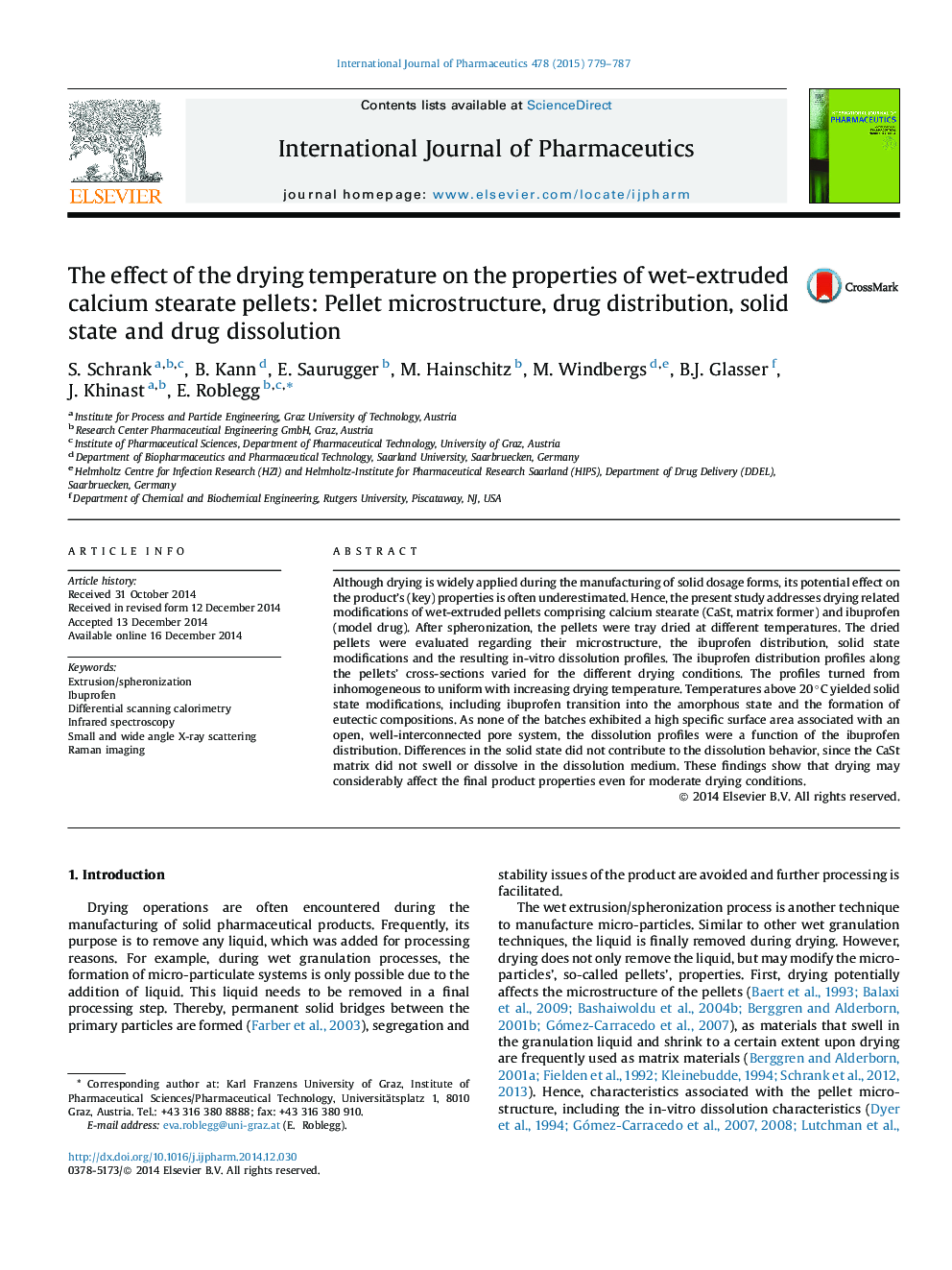| Article ID | Journal | Published Year | Pages | File Type |
|---|---|---|---|---|
| 2501762 | International Journal of Pharmaceutics | 2015 | 9 Pages |
Although drying is widely applied during the manufacturing of solid dosage forms, its potential effect on the product’s (key) properties is often underestimated. Hence, the present study addresses drying related modifications of wet-extruded pellets comprising calcium stearate (CaSt, matrix former) and ibuprofen (model drug). After spheronization, the pellets were tray dried at different temperatures. The dried pellets were evaluated regarding their microstructure, the ibuprofen distribution, solid state modifications and the resulting in-vitro dissolution profiles. The ibuprofen distribution profiles along the pellets’ cross-sections varied for the different drying conditions. The profiles turned from inhomogeneous to uniform with increasing drying temperature. Temperatures above 20 °C yielded solid state modifications, including ibuprofen transition into the amorphous state and the formation of eutectic compositions. As none of the batches exhibited a high specific surface area associated with an open, well-interconnected pore system, the dissolution profiles were a function of the ibuprofen distribution. Differences in the solid state did not contribute to the dissolution behavior, since the CaSt matrix did not swell or dissolve in the dissolution medium. These findings show that drying may considerably affect the final product properties even for moderate drying conditions.
Graphical abstractFigure optionsDownload full-size imageDownload high-quality image (309 K)Download as PowerPoint slide
